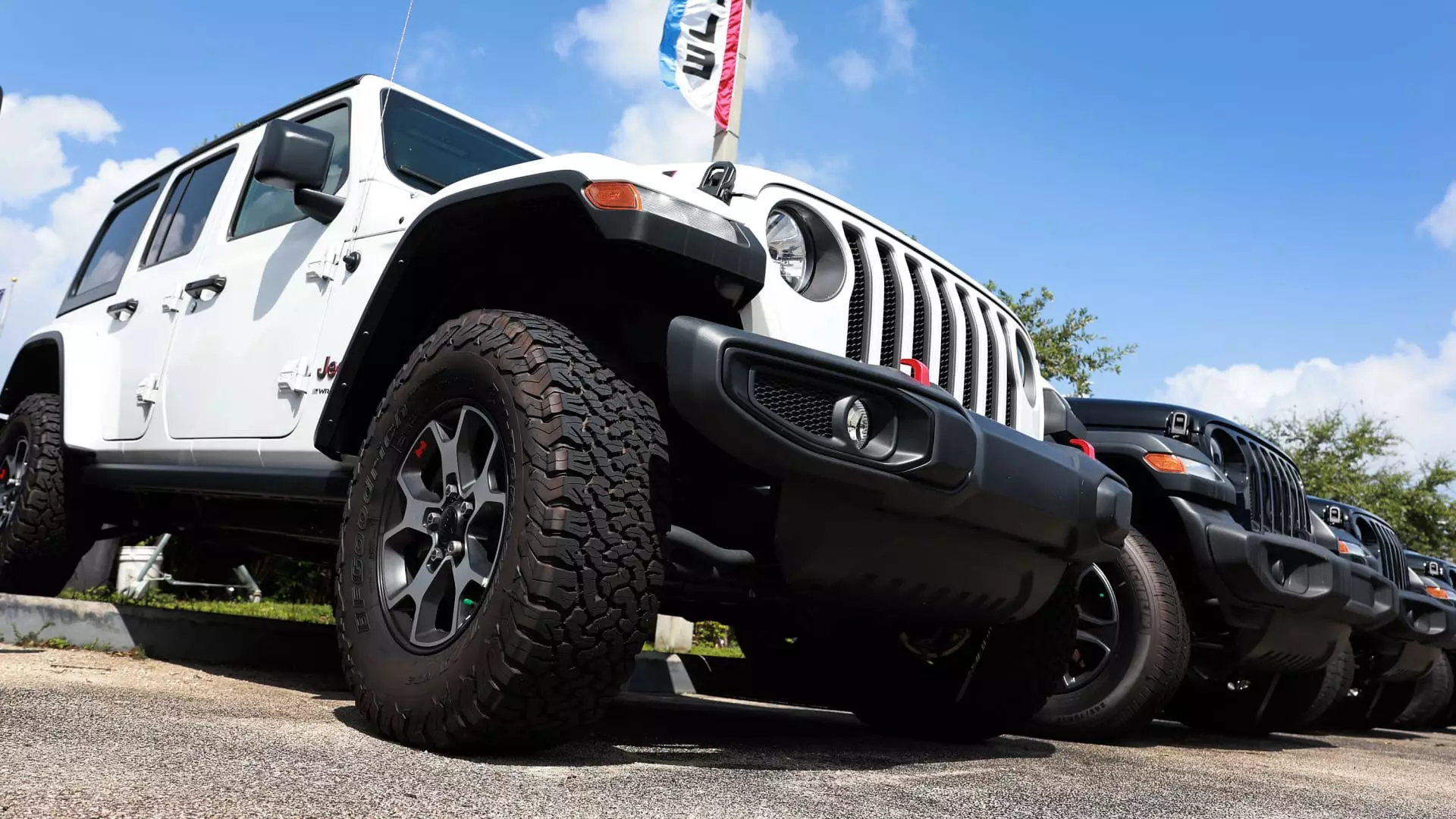The landscape of U.S. auto sales has undergone significant transformations amid a complex interplay of economic factors and market dynamics. Forecasts for the third quarter of 2024 reflect a notable struggle, with sales projected to decline by approximately 2% compared to the same period in 2023. This downturn, translating to around 3.9 million vehicles sold, is indicative of broader challenges impacting consumer purchasing behavior, including rampant inflation and fluctuating interest rates.
Economic uncertainties remain a significant barrier for potential car buyers. The Federal Reserve’s recent decision to cut interest rates has sparked cautious optimism; however, the impact on the auto market remains to be seen. Many consumers are now navigating a challenging financial landscape where the average new vehicle price hovers around $47,870. Jessica Caldwell, head of insights at Edmunds, emphasizes that high financing amounts—averaging $40,000—have effectively limited the pool of potential buyers. For many Americans, the question of affordability looms large, constraining their market options and ultimately affecting overall sales.
Analysts agree that while affordability is slowly improving, it is not enough to lift sales significantly in the short term. Charlie Chesbrough, a senior economist at Cox Automotive, highlights that the automotive market is still experiencing volatility and that these economic pressures will likely continue into the fourth quarter. As buyers remain cautious, the market faces the daunting task of appealing to those whose purchasing power has diminished in the face of rising prices.
Major Players and Market Shifts
As the market undergoes this turmoil, different automotive manufacturers are experiencing varied outcomes. According to recent forecasts, industry giants such as Honda and Ford are on track to exhibit growth, while others like Stellantis, Toyota, and BMW are predicted to suffer substantial losses. Stellantis, in particular, could see its sales plummet by as much as 21%, largely influenced by the company’s focus on securing profits over market share.
The company’s CEO, Carlos Tavares, has implemented a strategic shift prioritizing pricing strategies that may alienate potential buyers. This tactic indicates a clear departure from aggressive market penetration in favor of sustainability in profitability, particularly for flagship brands like Jeep and Ram. The repercussions of such strategies extend beyond immediate sales figures, potentially reshaping consumer perceptions and loyalty.
The electric vehicle (EV) segment introduces its own set of dynamics within the overall market. While sales in this sector are expected to rise by about 8% during the third quarter, many manufacturers, especially Tesla, are facing increases in competition and challenges maintaining their dominant market shares. Notably, Tesla’s share is projected to dip below 50% for the second consecutive quarter, highlighting the success of both new entrants and established manufacturers in the EV space.
Incentives play a critical role in bolstering the EV market, with average transaction prices remaining stable year-over-year while incentives surge. Federal credits of up to $7,500 are substantial enough to motivate consumers to consider EVs, despite the stringent eligibility criteria surrounding these incentives. This shift suggests an increasingly competitive landscape in which consumers may find compelling reasons to opt for electric over traditional vehicles.
Future Projections and Market Resilience
Looking ahead, both Cox Automotive and Edmunds are forecasting total light-duty vehicle sales in the U.S. to reach around 15.7 million in 2024. While Edmunds holds firm to its predictions, Cox has revised its estimates downward from an initial forecast of 16 million, reflecting ongoing realities facing consumers and the automotive industry. Nevertheless, the long-term outlook remains cautiously optimistic, particularly if economic conditions ease and consumer affordability continues to improve.
As 2024 progresses, the auto industry must navigate these multifaceted challenges while remaining agile and responsive to consumer needs. The interplay of economic forces and market adaptations will be critical in shaping not just quarterly results, but the overall trajectory of American automotive sales in the coming years. The path forward may not be straightforward, but with strategic innovation and an acute awareness of changing consumer demands, the industry can work towards a more promising horizon.

